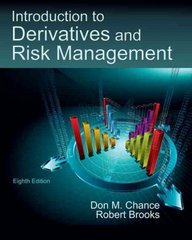Answer question listed


Griffins (G) were noble creatures that roamed the ancient world. They were second in power only to dragons (D), which envied them greatly. Griffins and dragons would fight over unclaimed territory (U), seeking to lay claim to the riches of the land and the treasures of the deep. While the age of griffins and dragons is long past, we know from old manuscripts that their struggle unfolded as follows: Whenever dragons and griffins met, they would engage in combat; either all the dragons or all the griffins would die, while the other side would survive. Solitary dragons and solitary griffins would sometimes encounter each other while exploring unclaimed territory. The more unclaimed territory there was, the less likely these encounters were. Three-quarters of the these encounters would result in the destruction of the griffin, leaving the dragon victorious; the other one-quarter would see the opposite outcome. Sometimes, however, two griffins would happen upon a solitary dragon. If one griffin was formidable enough, two of them together would be a force even a dragon would not be able to withstand. Thus, such encounters would always result in the death of the dragon. These encounters were rare, and the amount of unclaimed territory played no role here. Being of violent temper, dragons would also fight one another over unclaimed territory, the less territory remained unclaimed, the more likely were such battles. One of the two dragons would survive, while the other one would be destroyed. A typical female griffin mated and produced a single offspring once in every ten years. Female griffins made up exactly one-half of the entire population of griffins. Dragon mating, on the other hand, took place according to ancient rules and, consequently, the dragon birth rate was a constant, one new dragon being born every 100 years. Being essentially immortal and nearly peerless in power, neither dragons nor griffins would die in any way other than in combat with dragons or griffins. As the years wore on, dragons and griffins would claim previously unclaimed territory. Each dragon would claim 100 square miles every 20 years, while each griffin would claim 50 square miles a year. In writing your change equations, please convert all rates to per year rates, and when writing a product of state variables, enter the state variables in the alphabetical order. D'%3D -0-0-0-0-0-05 30-0 G' II U%3D D || G|| U 0.01 || 0.05 0.1 0.25 || 0.75 1 5 10 50 100 Griffins (G) were noble creatures that roamed the ancient world. They were second in power only to dragons (D), which envied them greatly. Griffins and dragons would fight over unclaimed territory (U), seeking to lay claim to the riches of the land and the treasures of the deep. While the age of griffins and dragons is long past, we know from old manuscripts that their struggle unfolded as follows: Whenever dragons and griffins met, they would engage in combat; either all the dragons or all the griffins would die, while the other side would survive. Solitary dragons and solitary griffins would sometimes encounter each other while exploring unclaimed territory. The more unclaimed territory there was, the less likely these encounters were. Three-quarters of the these encounters would result in the destruction of the griffin, leaving the dragon victorious; the other one-quarter would see the opposite outcome. Sometimes, however, two griffins would happen upon a solitary dragon. If one griffin was formidable enough, two of them together would be a force even a dragon would not be able to withstand. Thus, such encounters would always result in the death of the dragon. These encounters were rare, and the amount of unclaimed territory played no role here. Being of violent temper, dragons would also fight one another over unclaimed territory, the less territory remained unclaimed, the more likely were such battles. One of the two dragons would survive, while the other one would be destroyed. A typical female griffin mated and produced a single offspring once in every ten years. Female griffins made up exactly one-half of the entire population of griffins. Dragon mating, on the other hand, took place according to ancient rules and, consequently, the dragon birth rate was a constant, one new dragon being born every 100 years. Being essentially immortal and nearly peerless in power, neither dragons nor griffins would die in any way other than in combat with dragons or griffins. As the years wore on, dragons and griffins would claim previously unclaimed territory. Each dragon would claim 100 square miles every 20 years, while each griffin would claim 50 square miles a year. In writing your change equations, please convert all rates to per year rates, and when writing a product of state variables, enter the state variables in the alphabetical order. D'%3D -0-0-0-0-0-05 30-0 G' II U%3D D || G|| U 0.01 || 0.05 0.1 0.25 || 0.75 1 5 10 50 100








